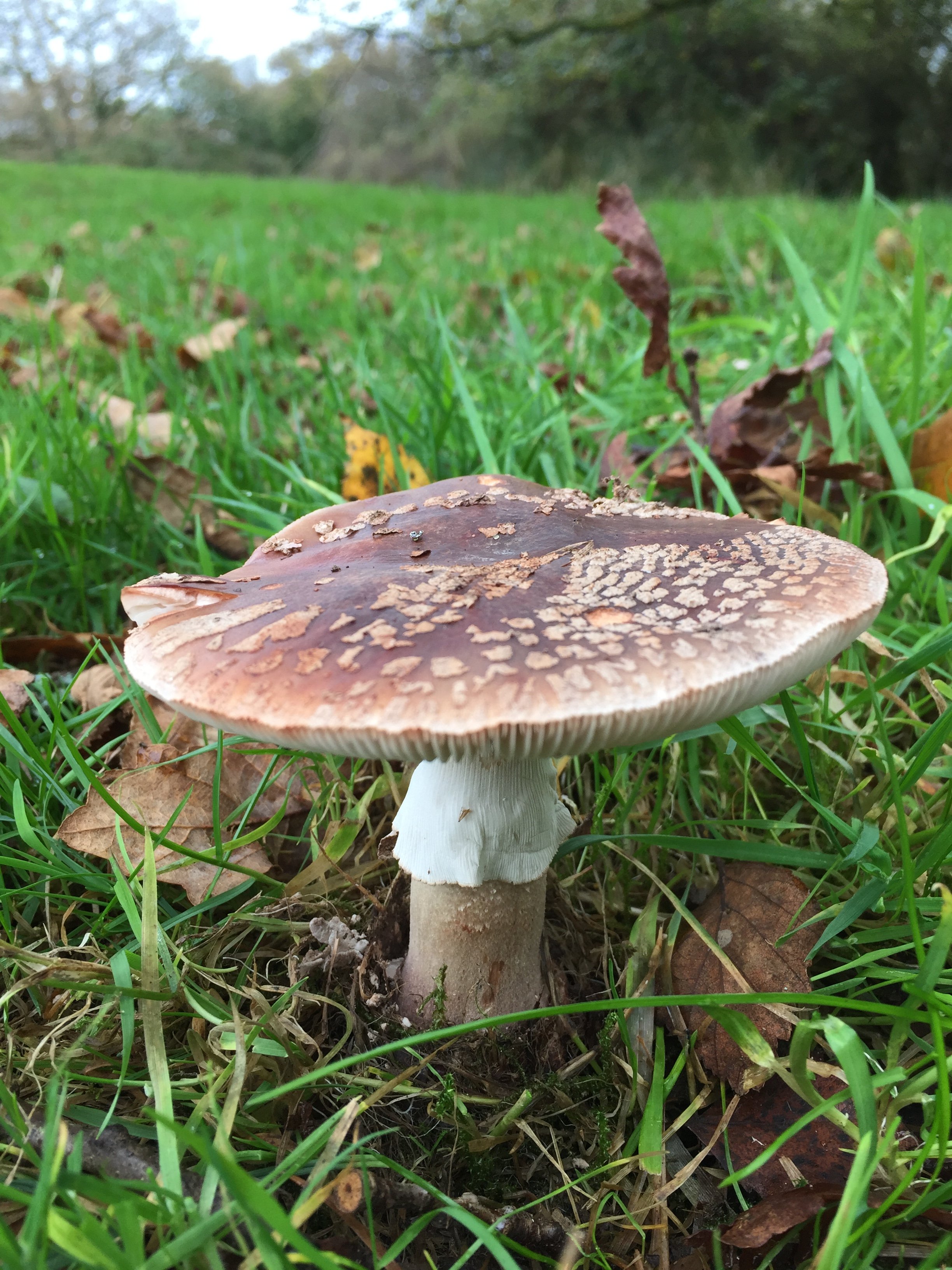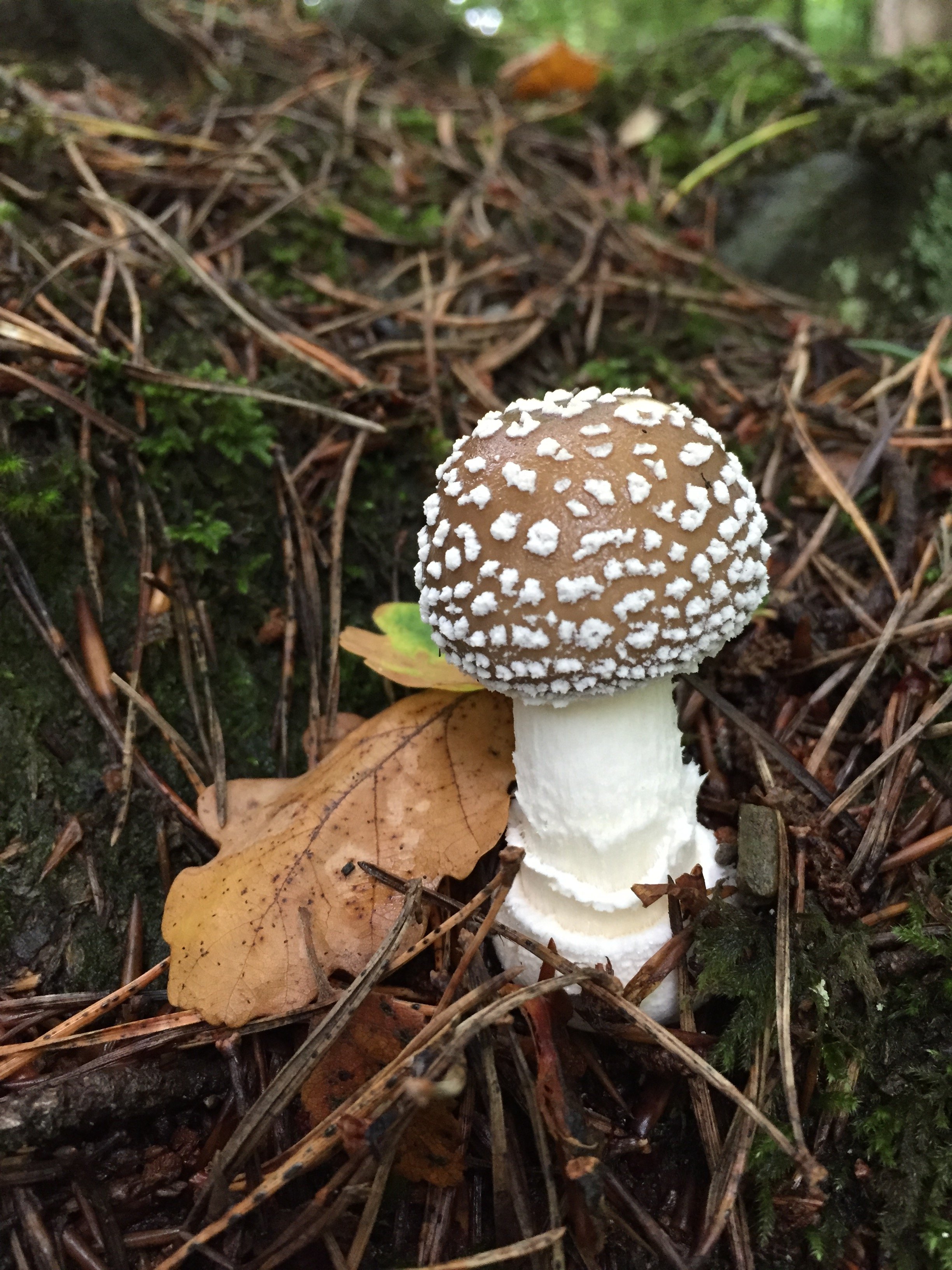
One of the most fascinating aspects of wild fungi is the huge diversity of different substances they contain and the alarmingly varied effects of their consumption. This is well illustrated by this pair of very similar species in the notorious Amanita group. One will provide you with an excellent meal, the other may well be your last – or at least leave you suffering enough to wish it had been. The examples in the photographs were found at the same site in mid-Devon within 100m of each other this autumn.
They look very different here only because they are at different growth stages. The smaller, brighter individual (below) is a young Panther Cap, a stunningly attractive but highly poisonous fungus. The older specimen is The Blusher with a wider, flattened cap that has expanded from its more rounded younger form. It is an excellent edible species and also a very common one.
The features that separate these two at all stages of growth are rather subtle but distinctive nonetheless. One is the way that the white flesh of the edible species turns a weak reddish colour when exposed, the feature that gives it its name (and just visible in the photograph). Another, more clear-cut, difference is the series of vertical grooves on the loose white ring on the upper stem of The Blusher, not present in the Panther Cap. Incidentally, the joyfully (and aptly) named Death Cap and Destroying Angel are also close relatives though, thankfully, they look very different and so should not cause any confusion here.
Once you have safely identified and gathered your Blushers there is one final hurdle to overcome to ensure the day ends well. Even Blushers contain a toxin but, unlike those in the Panther Cap and its lethal relatives, it is rendered harmless during the cooking process.

We regularly find blushers and are confident in our identification, but I still haven’t had the guts to try one, despite eating many wild mushroom species. Maybe now I will, after reading this encouraging account!
Hopefully this won’t be my last comment here!
An eater of Amanitas — no mushroom for a mistake }:>O
Yes, it’s a bit like driving a car. One moment of carelessness could be your last. I think that mistakes are often more likely due to overconfidence, once you have been picking a species for years. Maybe then you don’t look at every individual quite so carefully and a lone panther cap growing amongst a group of blushers finds it’s way into your basket.
Agree.
And then there are those other fungi which make Amanitas look tame – the yeast species that prey on drink drivers.